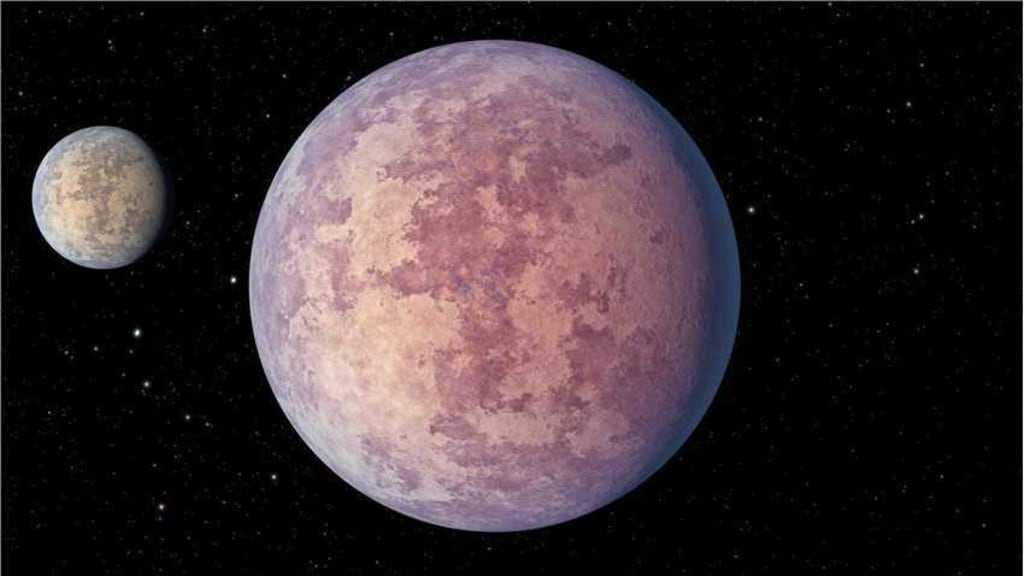"Insight sensitively detects shock waves from meteorite impacts on Mars
"Insight detects shock waves from meteorite collisions on Mars

An instrument used to detect seismic activity on Mars has reportedly shown a startling new capability. It can detect faint vibrations from meteorite impacts on Mars...
By combining data collected by NASA's Insight Mars rover and Mars Reconnaissance Orbiter, researchers have successfully linked vibrations on the surface of Mars to newly formed craters. This not only helps us understand the meteorite impact processes that continue to shape the geology of Mars but also suggests that the collection of seismic data reveals information beyond expected mission parameters that may help enable future exploration of other planets.
The Insight rover is important for the study of Mars. Since landing on the surface of Mars in November 2018, it has shown us that Mars is more geologically active than we thought and that it is accompanied by vibrations when it collides with the Martian surface.
This discovery is based on the Insight rover's built-in geophone. Scientists used the geophone to create the first detailed map of the interior of Mars. The sensitive device was even used to capture and record the sound of another planet by detecting acoustic vibrations in the thin Martian atmosphere.
These capabilities mean that the probe is in the best position to investigate the source of another planet's vibrations: meteors exploding in the Martian atmosphere, and then meteoric debris hitting the Martian surface as meteorites. The research is significant, said Raphael Garcia, an astrophysicist at the National Institute for Advanced Aerospace Studies at the University of Toulouse in France. A clear link between seismic waves and sound waves and meteorite collisions has never before been recorded on the surface of another planet.
The Insight probe's internal structural seismic experiment instrumentation (SEIS) and pressure sensors provide a unique opportunity to closely link acoustic waves generated by Martian meteoroids entering the atmosphere with surface impact processes so that we can use Insight seismic data to assess the location of new crater formation on Mars.
The entry of a large enough meteorite into a planetary atmosphere is a devastating event. First, when it enters a planet's atmosphere, a shock wave is generated and the meteorite explodes in mid-air as it falls. Scientists believe that this is due to atmospheric gases penetrating the cracks of the meteorite and gradually pressurizing from within the meteorite as it falls through the atmosphere and rubs together, eventually causing it to explode in mid-air. What will happen? This would bring more shock waves to the surface of Mars, and then if a larger meteorite hit the surface of Mars, a series of shock waves would be generated.
Theoretically, all vibrations on the Martian surface could be expected to decay into sound waves and seismic waves, which sensitive detection instruments could detect. Before the survey mission began, Garcia and his colleagues had suspected that the Insight probe was capable of detecting a meteorite blast in the air, but the team's detection exceeded their expectations and delivered an even bigger surprise.
Using acoustic and seismic wave data from the Garcia Insight probe, four separate collisions within a 300-kilometer radius of the probe's landing were identified, occurring on May 27, 2021, February 18, August 31, 2021, and September 5, 2021.
The distances between these four meteorite collision sites and the Insight probe are:286.5 km, 84 km, 267 km, and 86 km, respectively. Later, the NASA Mars Reconnaissance Orbiter took images of these areas, further verifying the new crater locations, which are consistent with the research team's survey data.
Indeed, meteorite collisions (and meteorite explosions in the air) can have some interesting effects on Earth. For example, scientists believe that meteorites provide the key elements that led to the emergence of life on Earth, and that extinction events caused by meteorite collisions play an important role in changing species evolution.
Mars appears to be very barren, but even so, meteorite collisions can affect the planet's geology and atmosphere. Describing the current meteorite and meteorite activity on Mars helps us better understand why Mars developed its present surface structure. Vibrations caused by meteorite collisions could even help scientists better characterize the planet's internal structure.
Unfortunately, we may not be able to get much more data from the Insight probe. Earlier this year, the team of scientists involved revealed that the probe appears to be losing its ability to recover power due to the thick dust covering the solar panels. However, the researchers noted that this research work holds promise for future scientific studies of Mars and other planets in our solar system. Our latest findings demonstrate that planetary seismology can confirm the origin of meteorite collisions and provide insight into the collision process, leading to better analysis of the planets' internal structures. The study is currently published in a recent issue of the journal Nature Geoscience.
About the Creator
Carlo Phil
Science and art are two sides of a coin






Comments
There are no comments for this story
Be the first to respond and start the conversation.